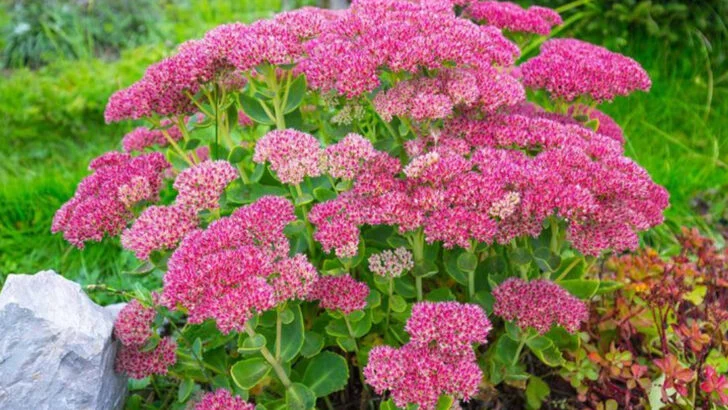Rooftop spaces can be tricky, they get more wind, more sun, and often less attention than ground-level gardens. But with the right plants, they don’t have to be high-maintenance or overgrown. The best ones know how to handle the elements without taking over or turning wild when you’re not looking.
It’s not just about looks, either. A good rooftop plant stays compact, doesn’t need constant pruning, and plays well with containers. These are the kinds of plants that hold their own in tough conditions and still manage to make the space feel inviting. No constant weeding, no surprise invasions, just a solid mix of dependable growers that know how to stay in their lane.
Sedum (Stonecrop)
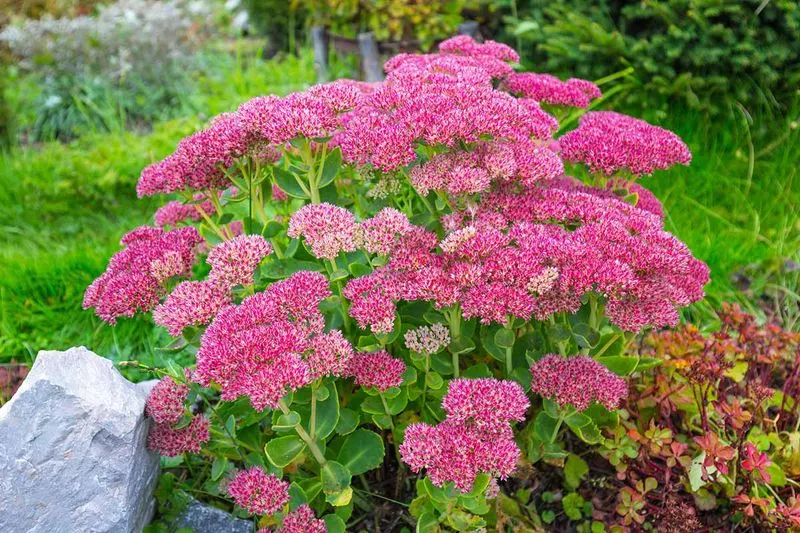
Sedum, often known as Stonecrop, offers a vibrant start with its fleshy, textured leaves. These resilient plants are perfect for rooftop gardens due to their drought-tolerant nature. Sedum’s compact growth ensures it doesn’t overtake other plants.
Their ability to thrive in poor soil makes them an excellent choice for rooftops. This plant’s vibrant colors range from green to red, adding a splash of color throughout the year.
Sedum is not only visually appealing but also attracts pollinators, adding life to your rooftop garden without being invasive.
Thyme
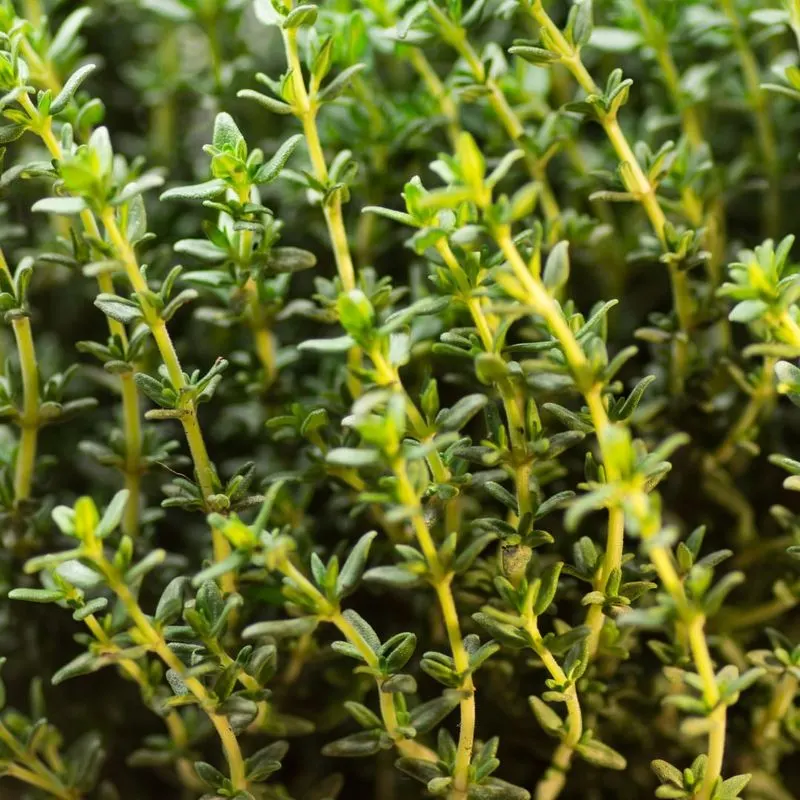
Thyme brings both aroma and beauty to rooftop gardens. This herb, with its tiny, aromatic leaves, thrives in sunny conditions. Thyme’s low-spreading habit ensures it stays contained while providing a fragrant addition to your garden.
Its resilience to drought and poor soils makes it a perfect candidate for rooftop planting. Thyme offers versatility, serving both ornamental and culinary purposes.
Beyond its fragrance, thyme attracts beneficial insects, contributing to a balanced ecosystem. It’s an ideal plant for those seeking a harmonious and fragrant rooftop space.
Lavender
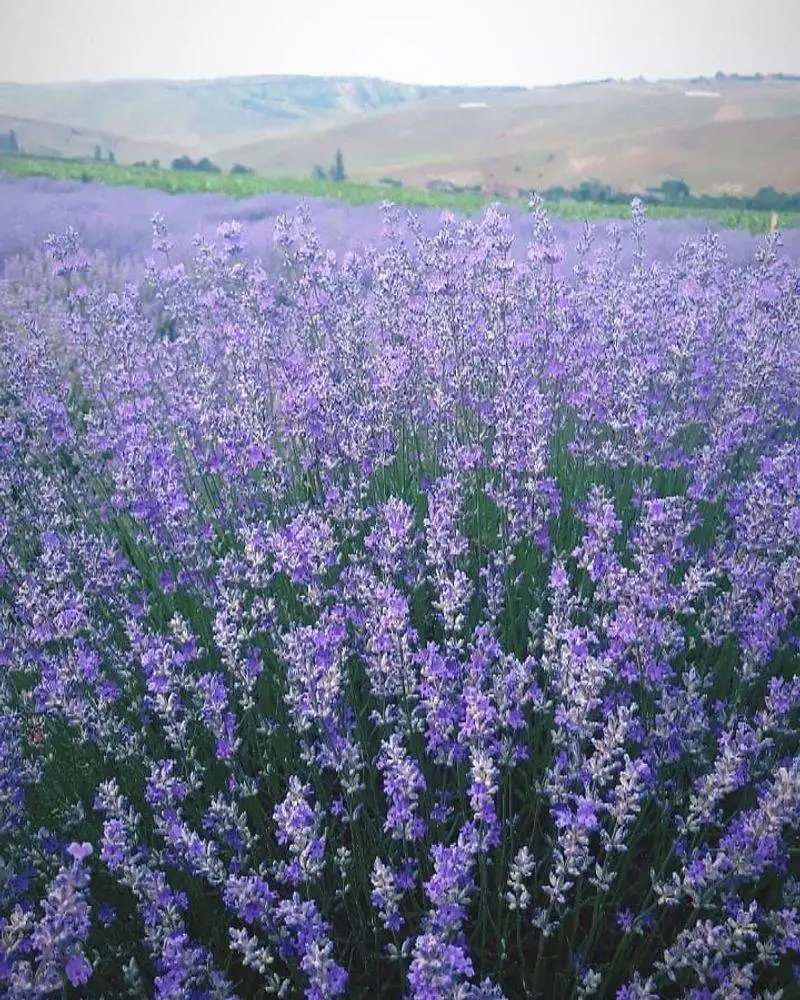
Lavender captivates with its enchanting fragrance and striking purple flowers. Ideal for rooftops, it thrives in full sun and well-drained soil. Lavender’s bushy growth stays manageable, preventing unwanted spread.
Its aromatic properties add a soothing ambiance, turning your rooftop into a relaxing retreat. Lavender also repels pests, making it both beautiful and practical.
The historical use of lavender in medicine and aromatherapy adds a layer of intrigue, connecting your garden to centuries-old traditions. This plant is a charming and functional addition to any rooftop.
Echeveria
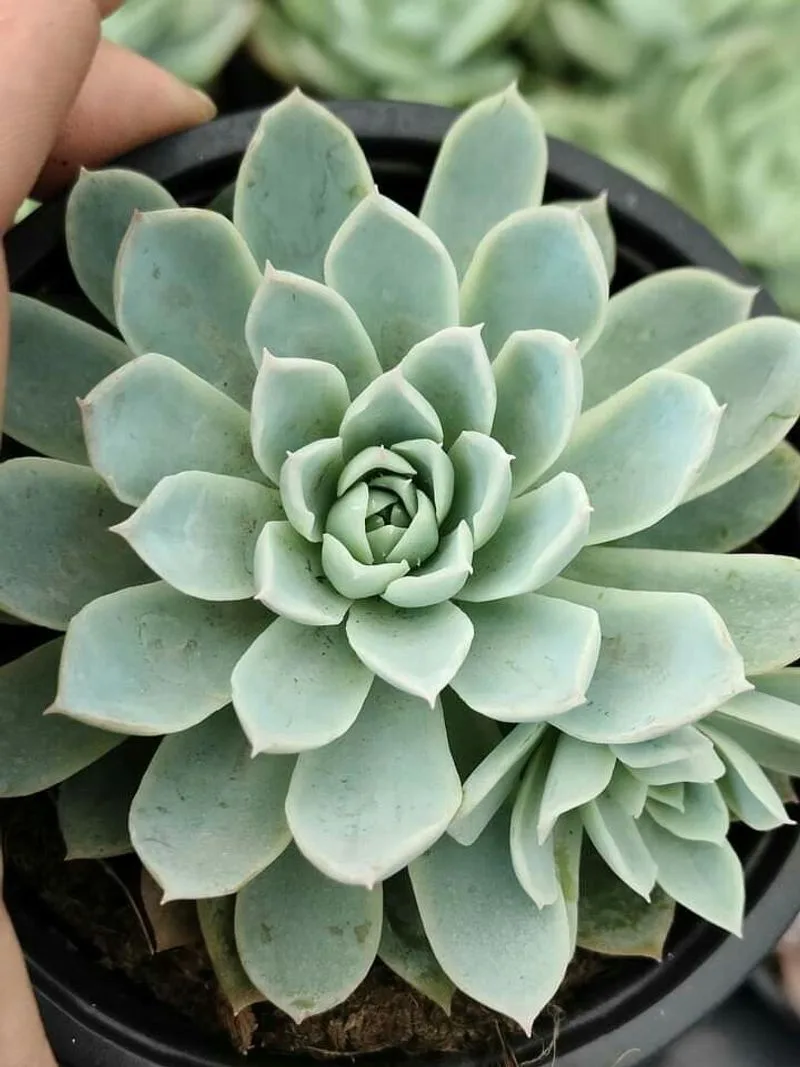
Echeveria, with its rosette-shaped leaves, offers a sculptural element to rooftop gardens. This succulent thrives in sunny spots, needing minimal water to flourish. Echeveria retains a compact form, ensuring it doesn’t overshadow neighboring plants.
Its varied leaf colors, from green to pink hues, add dynamic interest. Echeveria is perfect for those seeking a low-maintenance yet visually appealing plant.
Its adaptability to rooftop conditions makes it a favorite among succulent enthusiasts. Echeveria’s charm lies in its simple beauty and easy care requirements.
Hens-and-Chicks (Sempervivum)

Hens-and-Chicks, known for its charming rosettes, is a steadfast choice for rooftop gardens. This succulent requires little water and thrives in rocky, sunlit environments. Its clustered growth remains tidy, preventing overgrowth.
These plants are perfect for adding texture and interest. The name ‘Hens-and-Chicks’ refers to the mother rosette (‘hen’) and surrounding offsets (‘chicks’).
A quirky addition, this plant brings both aesthetic appeal and a touch of nature’s whimsy to your rooftop. Its hardy nature ensures a delightful garden with minimal maintenance.
Blue Fescue
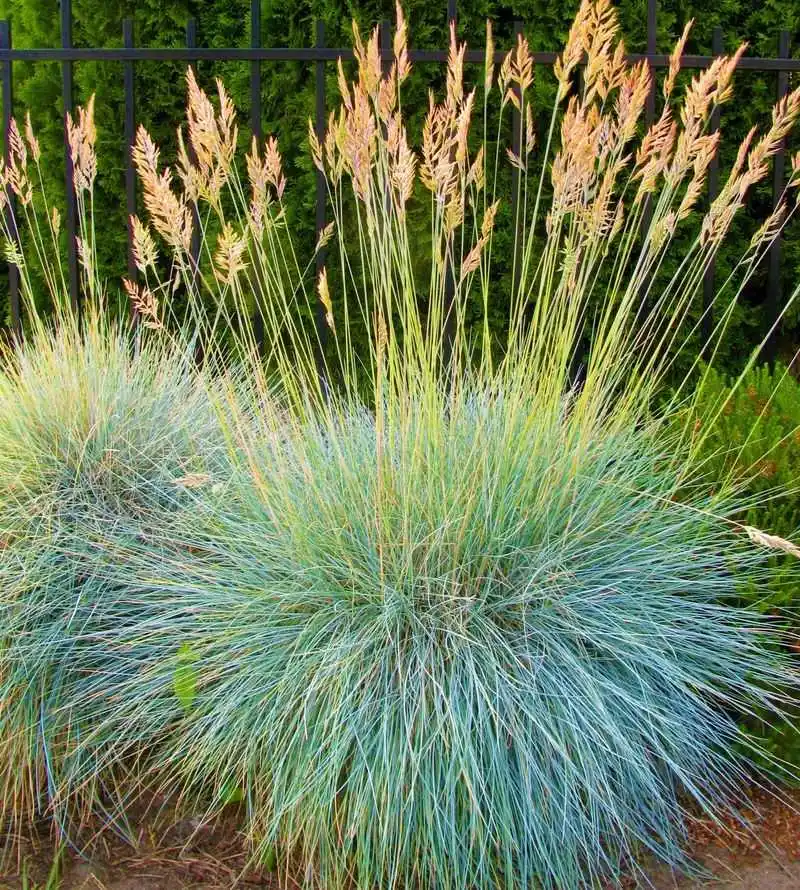
Blue Fescue is a striking ornamental grass known for its bluish-green foliage. This grass thrives in sunny, well-drained areas, making it ideal for rooftops. Its compact, tufted growth ensures it won’t overwhelm other plants.
The fine, needle-like leaves add a soft texture, swaying gently with the breeze. Blue Fescue is not only visually pleasing but also drought-tolerant, requiring minimal care.
Perfect for adding movement and color contrast, it’s a sophisticated choice for modern rooftop gardens. Its subtle elegance enhances any space without demanding attention.
Creeping Jenny
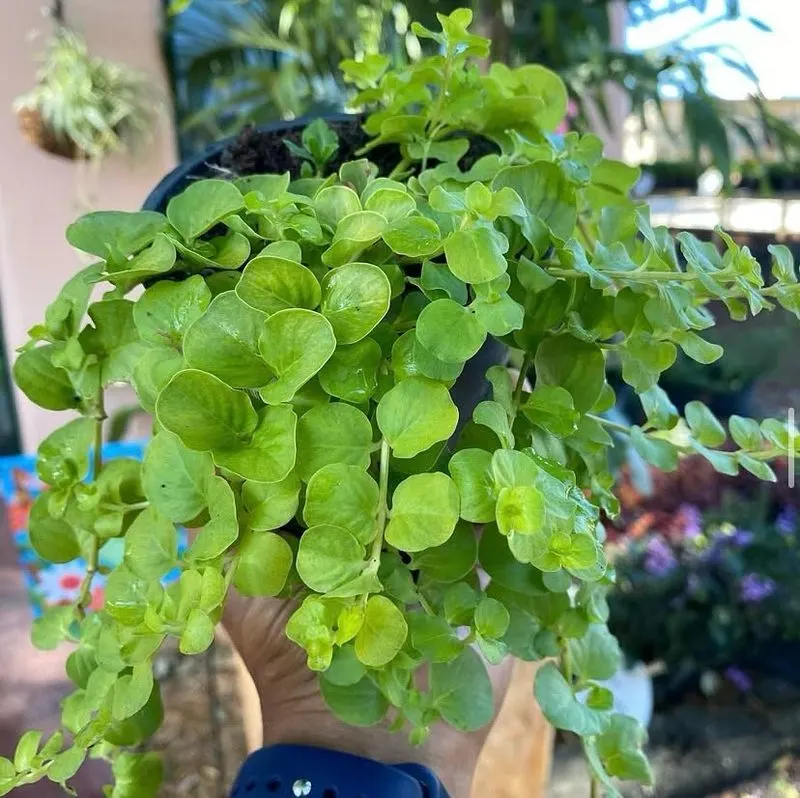
Creeping Jenny, with its bright yellow-green foliage, adds a cascade of color to rooftops. This plant enjoys sunny to partially shaded areas and is known for its adaptability. Despite its name, it maintains a controlled spread.
The vibrant leaves create a striking contrast against typical rooftop materials. Creeping Jenny is both ornamental and robust, handling various climatic conditions.
Its trailing habit makes it ideal for softening edges and adding visual interest. This plant brings vivacity to any rooftop garden, offering both form and function.
Sedum Spurium (Two-row Stonecrop)
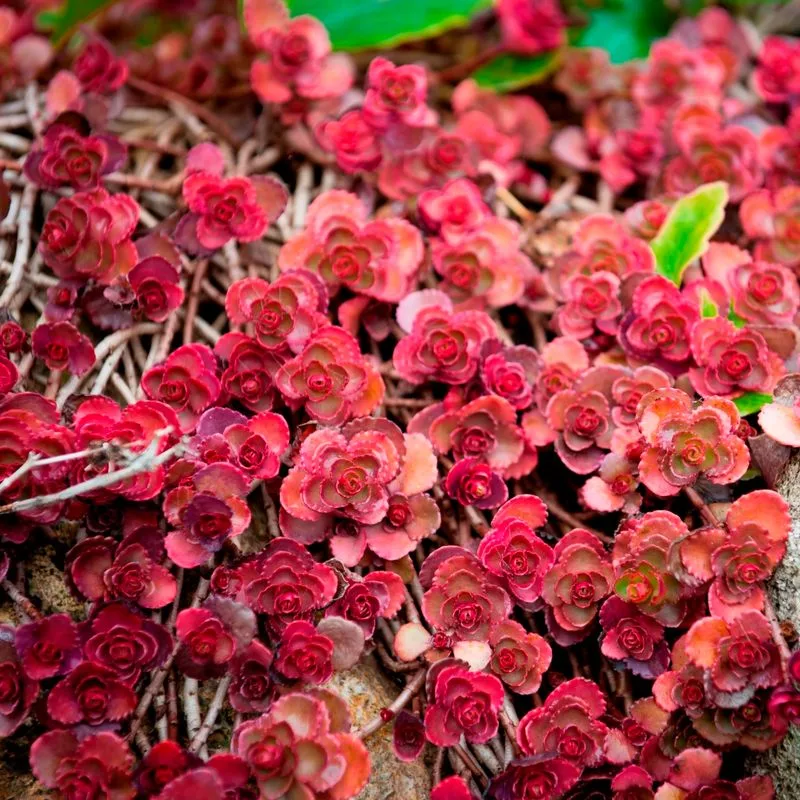
Sedum Spurium, or Two-row Stonecrop, is a resilient choice for rooftops. Its small, fleshy leaves form a dense mat, providing excellent ground cover without being invasive.
The plant’s leaves shift from green to red hues with the changing seasons, offering an ever-evolving display. It thrives in sunlit, well-drained areas, requiring minimal water.
Sedum Spurium is perfect for those seeking a dynamic yet low-maintenance plant. Its ability to withstand harsh conditions makes it a reliable choice, adding color and texture to your rooftop.
Saxifraga
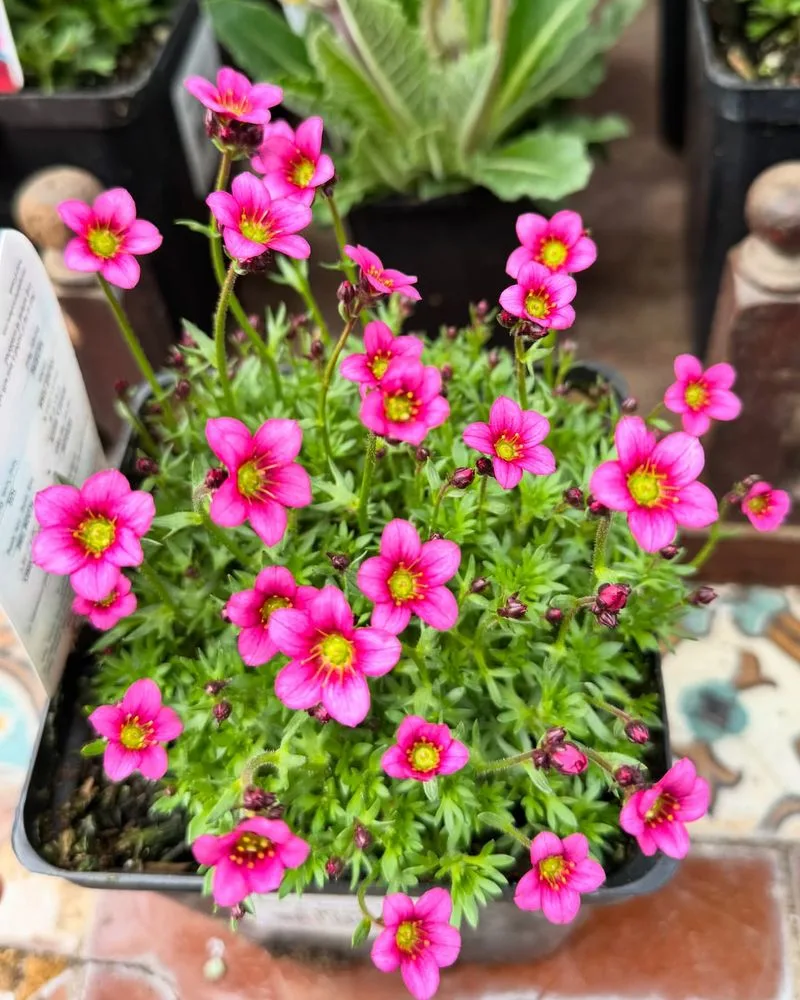
Saxifraga, often found in rocky terrains, is a resilient plant ideal for rooftop gardens. Its star-shaped flowers and lush foliage add a refreshing touch.
This plant thrives in well-drained soil and prefers partial shade, making it versatile for various rooftop conditions. Saxifraga maintains a compact form, ensuring it doesn’t spread uncontrollably.
The delicate flowers attract pollinators, enhancing biodiversity. A touch of the alpine, Saxifraga brings both beauty and ecological value, perfectly suited for a contained and vibrant rooftop garden.
Dwarf Iris
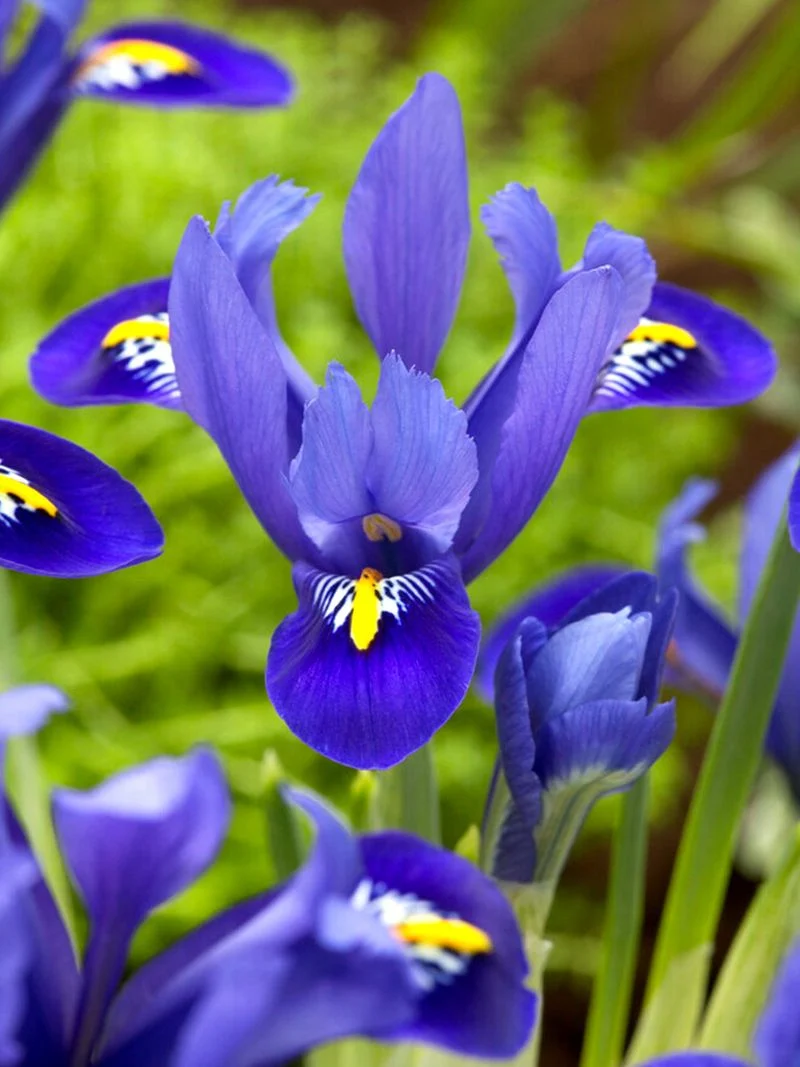
Dwarf Iris dazzles with its delicate, violet-blue flowers, making it a charming addition to rooftops. This plant thrives in sunny spots with well-drained soil.
Its compact growth ensures it fits seamlessly into small spaces without crowding. The Dwarf Iris blooms in early spring, offering a burst of color when most plants are still dormant.
With its elegant appearance and minimal maintenance needs, the Dwarf Iris is perfect for rooftop gardens seeking seasonal interest. Its beauty and adaptability make it a standout choice.
Ajuga (Bugleweed)
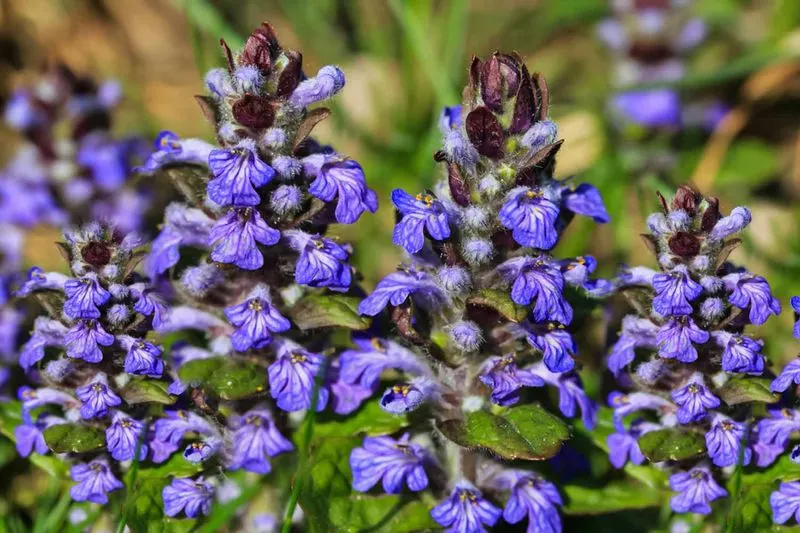
Ajuga, or Bugleweed, introduces richness with its glossy, dark green leaves and vibrant blue flowers. This plant thrives in partially shaded areas and adapts well to rooftop gardens.
Ajuga’s low-growing habit keeps it contained, providing lush ground cover without becoming invasive. Its flowers bloom in early spring, attracting pollinators and adding life to your garden.
Known for its resilience, Ajuga requires minimal maintenance, making it a practical yet beautiful option. The plant’s unique texture and color enhance the visual appeal of any rooftop setting.
Allium
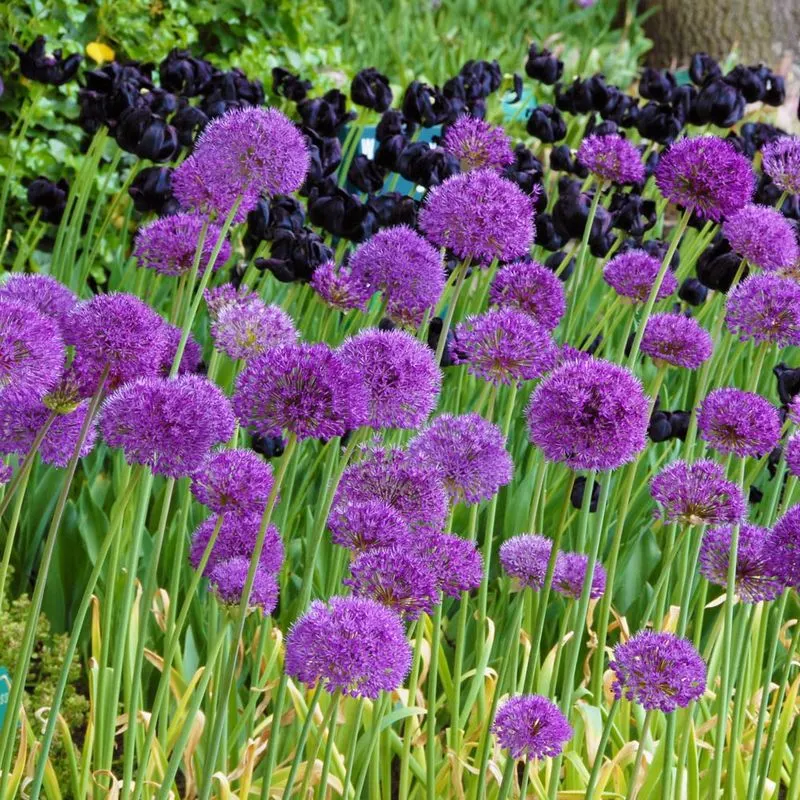
Allium, recognized for its spherical flower heads, adds architectural flair to rooftop gardens. This plant thrives in sunlit areas with well-drained soil, growing tall and slender.
Allium’s striking purple blooms attract pollinators, fostering an ecologically balanced garden. Despite its bold appearance, it maintains a contained growth habit, preventing unwanted spread.
Known for its pest-repelling properties, Allium is both functional and decorative. Its unique structure and vibrant color make it a captivating addition to any rooftop space, ensuring visual interest throughout its blooming period.
Armeria (Sea Thrift)
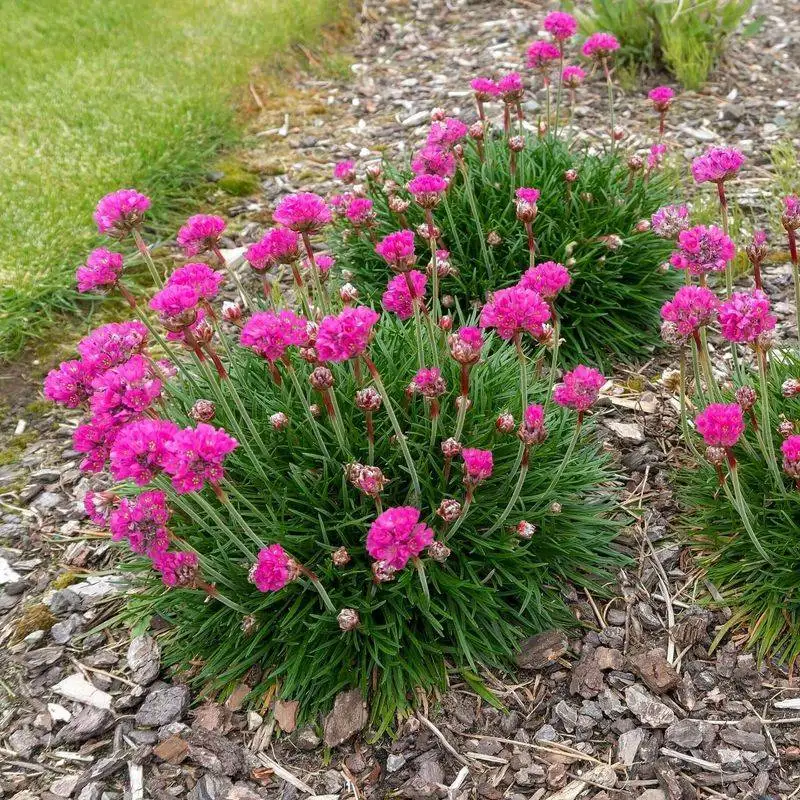
Armeria, or Sea Thrift, enchants with its small, pink blossoms atop slender stems. This plant thrives in sunny, well-drained environments, making it ideal for rooftop gardens.
Armeria’s compact growth habit ensures it remains tidy and controlled, contributing to a well-organized garden. Its ability to withstand salty conditions adds to its robustness.
Known for its cheerful appearance, Armeria brings a touch of coastal charm to your rooftop. It’s perfect for gardeners seeking a resilient yet vibrant plant that offers both beauty and practicality.
Lamb’s Ear
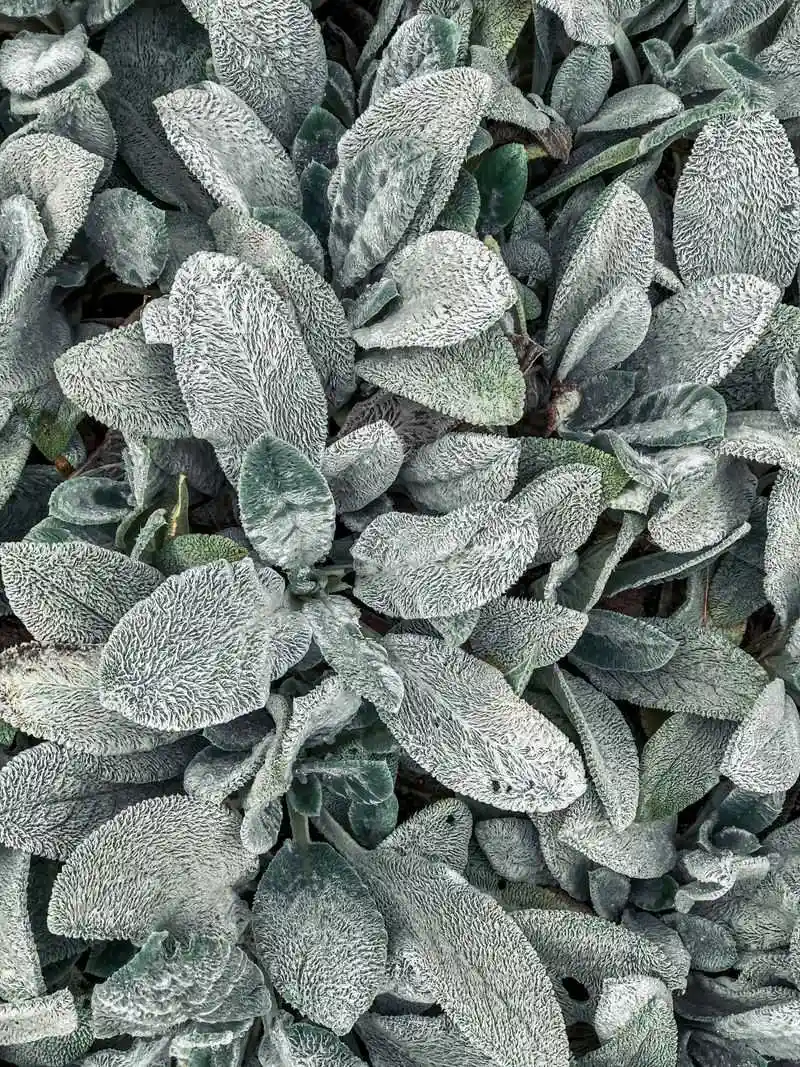
Lamb’s Ear captivates with its soft, silvery foliage, adding a tactile element to rooftop gardens. This plant flourishes in sunny, well-drained areas, known for its drought tolerance.
Its velvety leaves create a striking contrast against typical garden greenery, offering both texture and visual interest. Lamb’s Ear maintains a compact growth habit, ensuring it doesn’t overrun other plants.
Ideal for those seeking a unique sensory experience, this plant brings both beauty and intrigue to any rooftop. Its easy-care nature makes it a delightful choice for a low-maintenance garden.
Dianthus (Pinks)
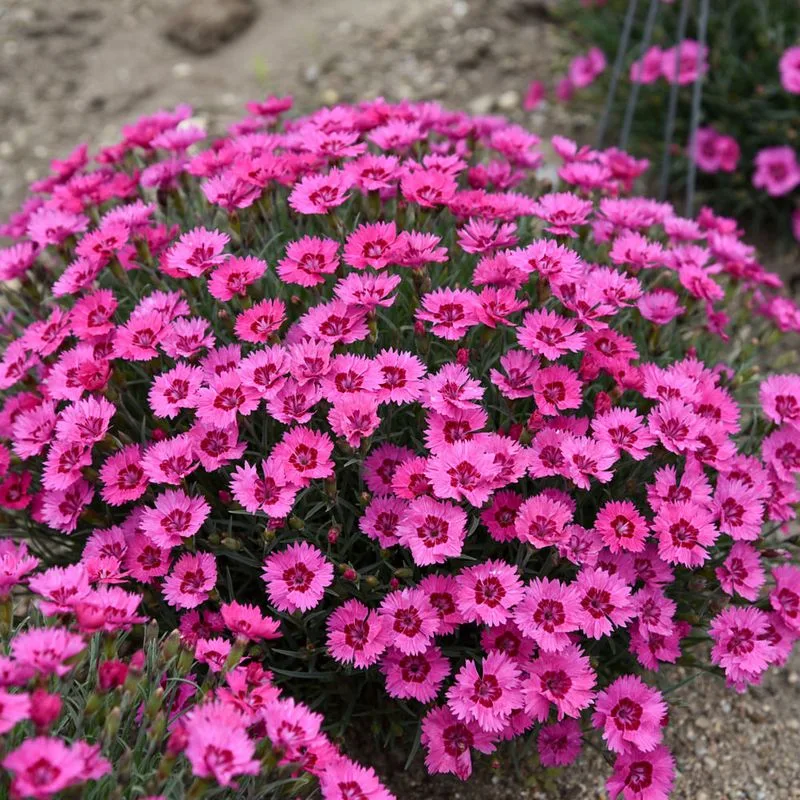
Dianthus, commonly known as Pinks, introduces bright hues with its small, vibrant flowers. This plant thrives in sunny, well-drained areas, making it suitable for rooftops.
The clove-like fragrance of Dianthus adds a sensory delight, enhancing the garden’s ambiance. Its compact growth prevents it from spreading aggressively, keeping the garden orderly.
Known for its long blooming period, Dianthus provides continuous color and charm. It’s an excellent choice for those seeking a fragrant and visually appealing plant that requires minimal attention.
Yarrow
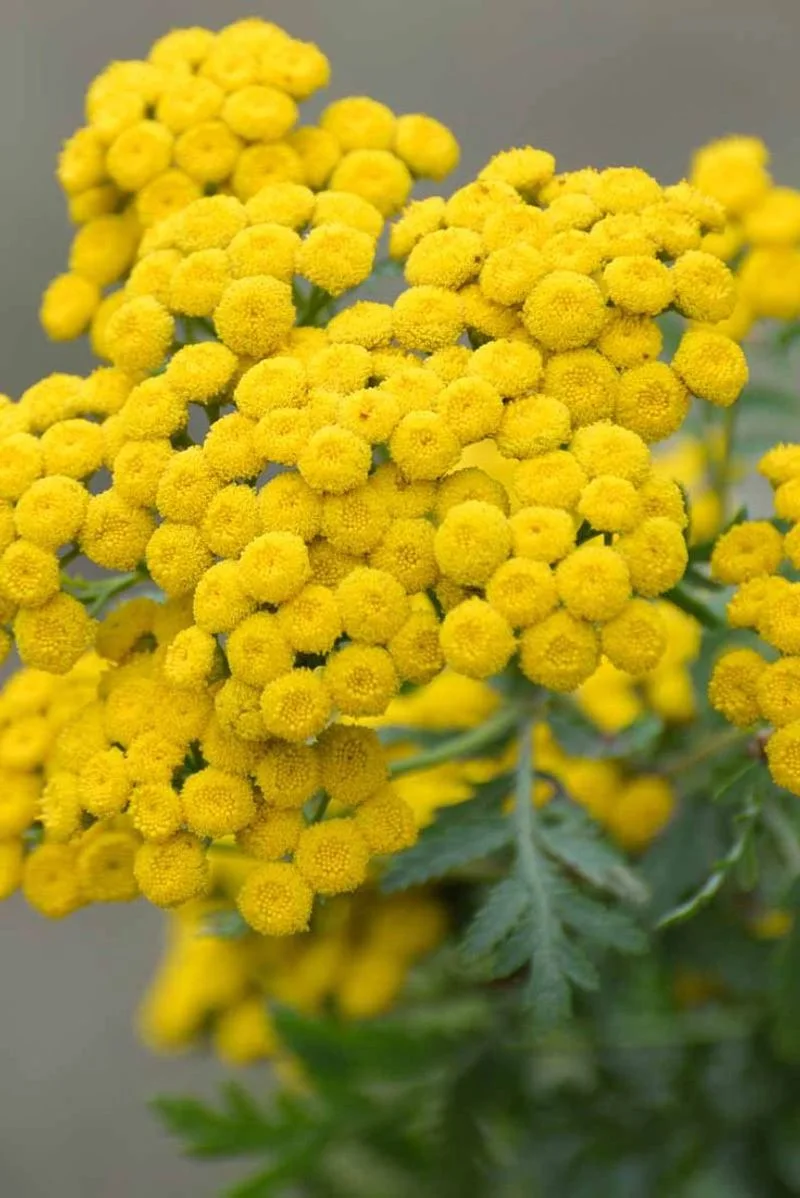
Yarrow stands out with its flat-topped clusters of tiny white flowers and fern-like foliage. Ideal for sunny rooftop gardens, it thrives in well-drained soil.
This plant’s drought tolerance and pest resistance make it a practical choice for low-maintenance gardening. Yarrow’s contained growth habit keeps it from spreading uncontrollably.
Its historical use in medicinal remedies adds an intriguing layer, connecting modern gardens to ancient practices. Yarrow’s combination of beauty and utility makes it a valuable addition to any rooftop space.
Ice Plant
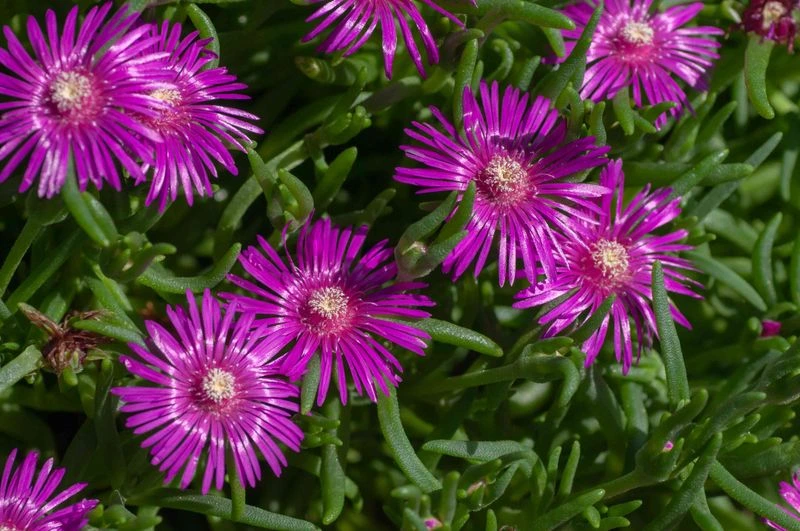
The Ice Plant, with its dazzling flowers and succulent leaves, is a captivating addition to any rooftop garden. Its blooms, resembling a vibrant carpet, offer a burst of color. Perfect for sunny spots, it thrives on minimal water.
Known for its resilience, the Ice Plant withstands harsh rooftop conditions. Originally from South Africa, it has adapted to drought and poor soil. Its ability to store water ensures survival through dry spells.
Ideal for those seeking low-maintenance beauty, this plant’s compact growth prevents spreading, making it a top choice for contained rooftop gardens.

